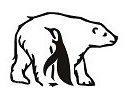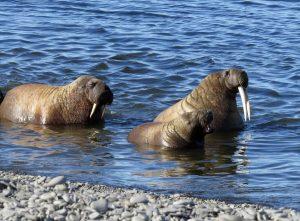
Photo: Vadim Strik / GeoPhoto
The autumn air monitoring of polar bears in 2024 has been completed in the Bear Islands Nature Reserve in the Republic of Sakha (Yakutia): the method of multispectral aerial photography from a helicopter was used for the first time to study the predator, the press service of the Ministry of Natural Resources of Russia reported.
The archipelago of the Bear Islands is one of the main places where the ancestral dens of polar bears are formed on the lands of Yakutia. The monitoring data will be used in the large-scale research project “White Bear Census”, which has been implemented in our country since 2022.
The calculation of the number of animals living on the archipelago of the Bear Islands and the coastal part of the reserve takes place annually: in autumn, polar bears are clearly visible on the ground not yet covered with snow. The research was conducted in two stages.
At the first stage, during the first day of air monitoring, 99 polar bear individuals were recorded from a helicopter, as a result of the second flight, according to visual observations, more than 70 predators were counted. Simultaneously with visual observations, instrumental multispectral aerial photography was conducted for the first time on the territory of the Bear Islands Nature Reserve.
The method of obtaining photos and video images of a polar bear and its habitats from a helicopter not only in the visible range, but also in the infrared thermal spectrum made it possible to more reliably detect animals in difficult weather conditions.
During the second stage of the research, it was necessary to collect biological materials, for which the researchers caught a male polar bear, which was then released. “Such studies have allowed us to draw conclusions about the physical condition of animals, the characteristics of their food supply,” explained Arkady Semenov, director of the Lena Pillars National Park, to which the Bear Islands Reserve administratively belongs.
“We will also be able to assess the health of the population and the impact of the Northern Sea Route on animals. The territory of the reserve is unique in that bears live in a natural environment – there is not a single settlement or military base there. And in this sense, the Bear Islands Nature Reserve can become one of the central sites for the study of polar bears,” the director said.

Photo: Maxim Deminov / GeoPhoto
In the autumn of 2023, during the project, the number of polar bears in the Bear Islands Nature Reserve was determined for the first time: the drone photographed the animals, the neural network processed more than 25 thousand frames, and it turned out that 176 bears live on the archipelago, among them 31 cubs.
At the same time, a five-year animal monitoring program was launched (from 2024 to 2028) in the Bear Islands Nature Reserve, called the “polar bear maternity hospital”, which was estimated at 138 million rubles.
Bear Islands is a state nature reserve in the north of the Nizhnekolymsky district of the Republic of Sakha (Yakutia), established in 2020. It consists of two clusters with a total area of 815,568 hectares – marine and mainland. The Bear Islands are 6 islands in the East Siberian Sea: Krestovsky, Andreeva, Pushkareva, Leontieva, Lysova, Chetyrehstolbovoy. The reserve also includes the Kolyma tundra on the mainland.
This year’s research was conducted jointly with representatives of the Ministry of Natural Resources of Russia, the Roszapovedcenter, ANO “Ecofactor” and the Institute of Ecology and Evolution named after A.N. Severtsov. The results of the visual and instrumental calculation will become known after processing several tens of thousands of photographs – for which scientists use artificial intelligence.
By Anna Shchetinina


